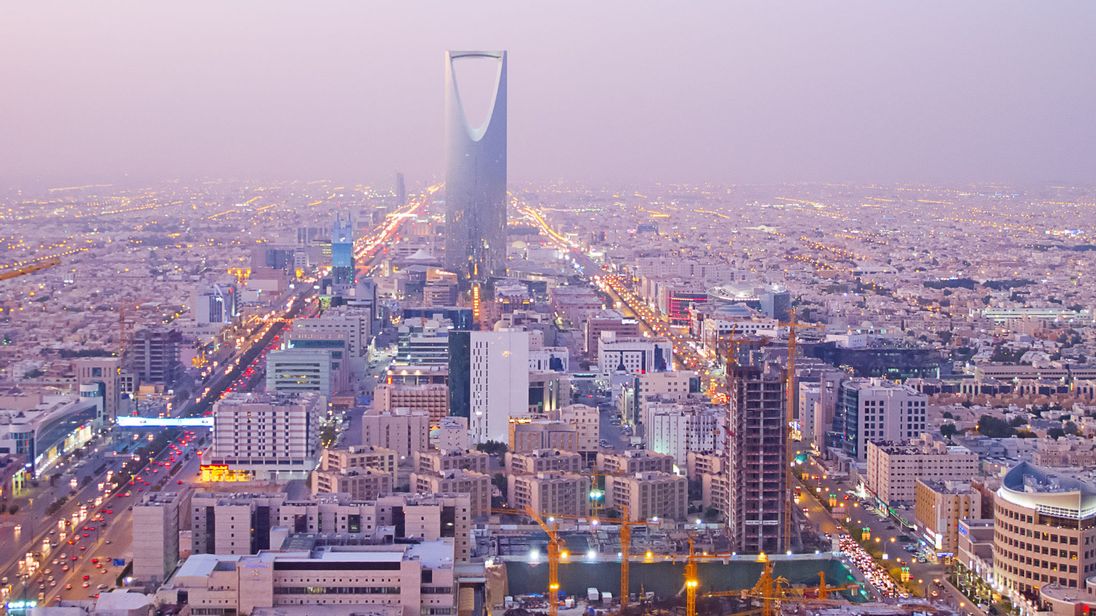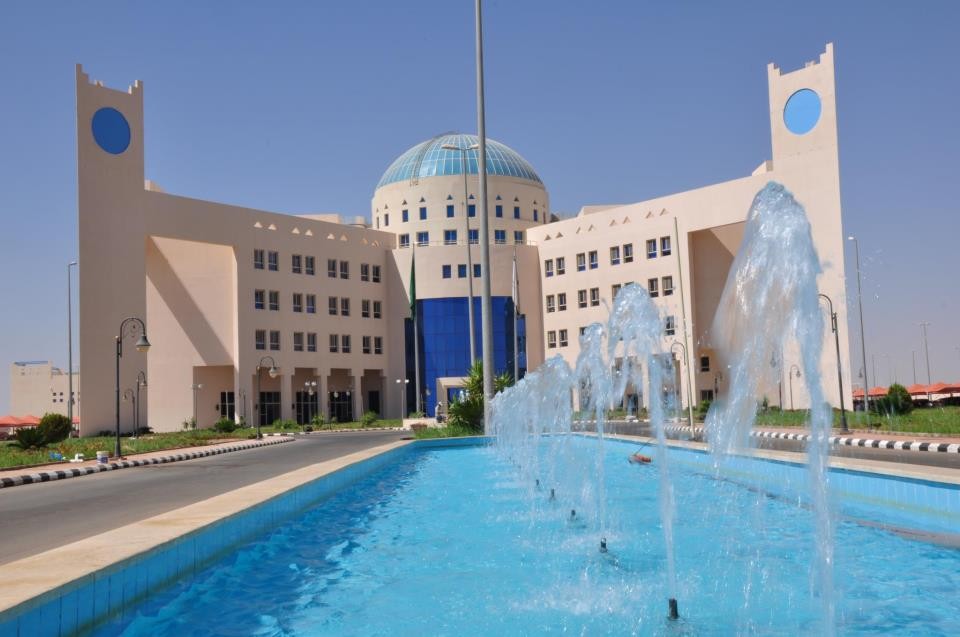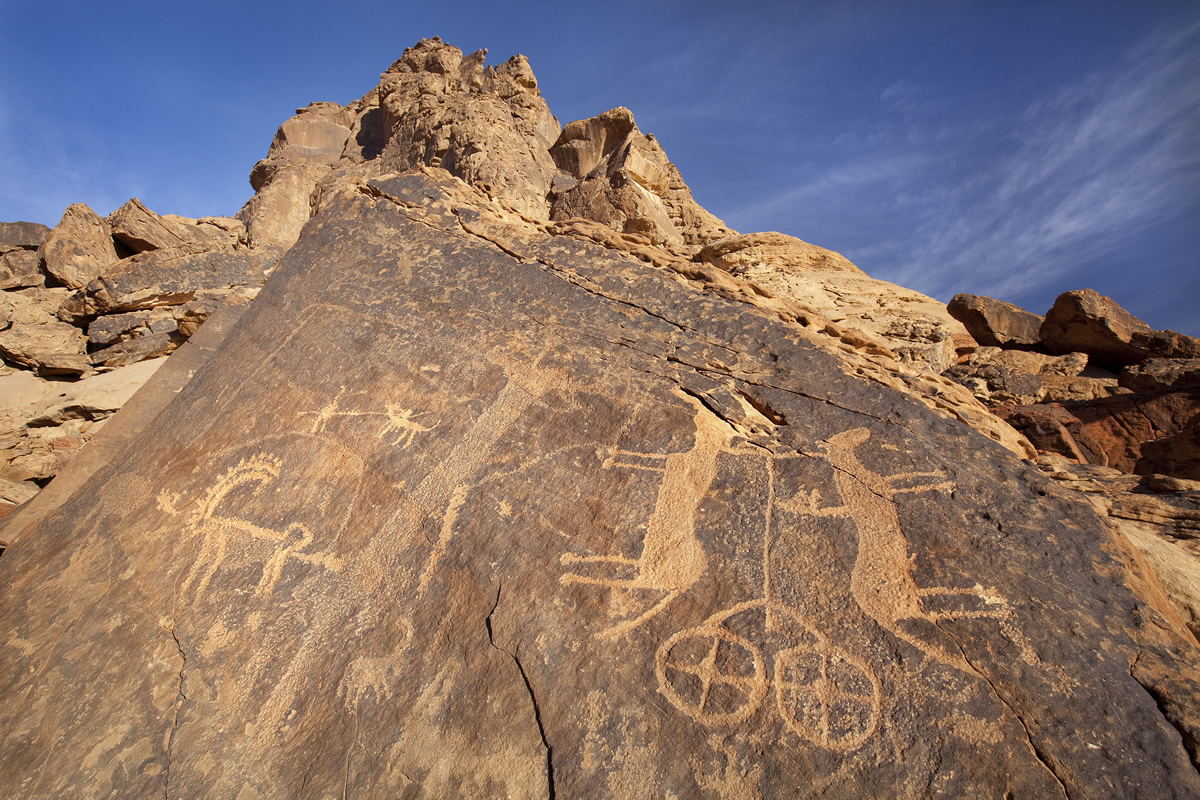The birthplace and spiritual home of Islam, Saudi Arabia is as rich in attractions as it is in stirring symbolism. It is also one of the most difficult places on Earth to visit.
For those who do get in, rock-hewn Madain Saleh is Arabia’s greatest treasure. Other wonders abound, from the echoes of TE Lawrence along the Hejaz Railway to the mud-brick ruins of Dir’aiyah. Fascinating Riyadh is a showpiece for modern Saudi Arabia, Jeddah blends ancient and modern and has an enchanting old city made of coral, while the Red Sea coast has world-class diving. And for Muslim travellers, Mecca and Medina represent the most sacred destination you can imagine.
There are few places left that can be said to represent the last frontier of tourism. Whether you’re an expat or a pilgrim, Saudi Arabia is one of them.
1. Riyadh

Once a walled, mud-brick way station along desert trading routes, Riyadh (meaning ‘garden’) is the Kingdom’s political, financial and administrative capital and one of the wealthiest cities in the world. It also has a very Saudi subtext: nowhere are the contradictions of modern Saudi Arabia more evident than in Riyadh. Seen from afar, soaring, sparkling, stunning modern towers rise above the desert and shiny 4WDs throng modern highways. Up close, Riyadh is cautious and sober (certainly compared to Jeddah), not to mention conservative and deeply rooted in Saudi traditions. Throw in fine hotels and restaurants and some excellent sights, and it’s a fascinating place to spend a few days.
2. Hejaz

Meaning ‘barrier’, the region derives its name from the great escarpment that runs along Hejaz, separating it from the great plateaux of the interior. Historically, Hejaz has always seen itself as separate from the rest of the Kingdom, and that’s even more true today with its friendly rivalry with the Najdis in the Riyadh region. Outward looking and cosmopolitan, the Hejazi are fiercely proud of their heritage. Explore the Red Sea coastline and make time for languid Jeddah, rarely visited Yanbu and bustling, family-oriented Taif.
3. Jeddah

The country’s commercial capital, and a point of convergence for pilgrims and traders for centuries, Jeddah is the most easygoing city in the Kingdom – not to mention its most beguiling. The Al Balad district, the heart of Old Jeddah, is a nostalgic testament to the city’s bygone days, with the beautiful coral architecture of historic buildings casting some welcome shade over the bustling souqs where shopkeepers hawk their goods.
Jeddah has done much to improve its image over the years. North Jeddah in particular has undergone massive redevelopment to make the Corniche more attractive to visitors, while upscale department stores and malls have expanded shoppers’ choices. The city is also famed for its international cuisine and seafood, and it remains a sweet spot for seasoned and novice scuba divers.
4. Mecca

Muslims often describe the moment they step inside Mecca’s Grand Mosque as an overwhelmingly emotional experience. For those living outside Saudi Arabia, a visit to Mecca – generally spelt ‘Makkah’ by Muslims and in Saudi Arabia – is a lifelong dream as they prepare for the hajj pilgrimage, an obligation that all Muslims must perform if they are financially and physical able to do so.
But Mecca, the birthplace of the Prophet Muhammad, is not limited to satisfying the spiritual thirst of visitors. Born of the desert, this is a city with the heart of a village, conjuring images of historic Arabia. Sun-bleached homes nestle in rocky hillsides and visitors bargain with shopkeepers with the largest mosque in the world rising above them. It’s here that modernity, thanks to extensive building improvements, mixes with the Arabia of the past.
5. Tabuk

Tabuk, now a bustling tourist destination, was a strategic stopping place for pre-20th-century hajj pilgrims trekking on foot from Damascus (Syria) to Medina and onward to Mecca. The city’s culture was deeply influenced by Egyptian travellers (one of the largest groups of land-travelling pilgrims) from the west and the Ottomans (who controlled pilgrimage routes for centuries) from the north.
Defying the perception that Saudi Arabia is all desert sand and sun, Tabuk also serves as a gateway to a pristine region of white beaches, virtually untouched islands and coral reefs, and snowy mountains in winter. An archaeologist’s paradise, Tabuk was once home to the Nabateans, who populated the region 700 years before the birth of the Prophet Mohammed. The region’s rock formations reveal thousands of examples of pre-Islamic art.
6. Taif

Situated 1700m above sea level, Taif can seem like a breath of fresh air in summer, and compared to humid Jeddah it truly is. Its gentle, temperate climate is its biggest attraction. Watch for wild baboons along the mountain roadside on the way into the city from Jeddah.
Taif is family friendly, with over 3000 garden parks scattered throughout the city and outlying areas; in the evening the parks are packed with families spreading out a full supper on blankets. Some bring sheesha, filling the night air with a sweet, smoky aroma. Taif is not known for its restaurants, so buying everything you need at a market and settling down for a picnic is a wonderful alternative. The city is particularly popular among visitors for its roses and fruit – particularly honey-sweet figs, grapes, prickly pears and pomegranates.
In summer Taif becomes the Kingdom’s unofficial capital when the king relocates here.
7. Al Ula

Al Ula – gateway to Madain Saleh – is a small town about 400km north of Medina. Once an oasis with fertile soil and abundant water, it was founded in the 6th century BC and originally inhabited by the Lihyanites. The town was formerly a strategic trade route for spices and incense from the Levant, Egypt and North Africa.
Situated in a valley, Al Ula has an exceptional view of snowcapped mountains in winter, palm groves running down the centre of the wadi (river bed) and forbidding red-sandstone cliffs rising up on two sides.
As well as extraordinary Nabataean tombs in the vicinity, the town has the delightful ruins of Old Al Ula – one of the best examples of traditional Arab architecture. With a little imagination, its winding narrow alleys and high watchtowers can bring back the sights and sounds of Al Ula’s origins.
8. Madain Saleh

If you can only visit one place in Saudi Arabia, make it Unesco World Heritage–listed Madain Saleh. This crossroads of ancient civilisations, pilgrims, explorers, trade caravans and armies finds its most remarkable expression in the elaborate stone-carved tombs of the Nabataeans. Although the tombs are less spectacular than the Treasury at better-known Petra in Jordan, the setting of sweeping sand and remarkable rock formations is unique and unsurpassed.
9. Yanbu

At first glance, with its port, refineries and petrochemical plants, Yanbu is hardly the Kingdom’s most attractive spot. But it’s fast becoming the top tourist destination in the country, with its premier scuba-diving locations and pristine white sandy shores, many with resorts and private beaches geared towards families. The industrial section of Yanbu is a good 10km to 15km south of the city centre and has little impact upon the region’s gorgeous beaches to the north. The downtown area is small but quaint, with an unhurried atmosphere not found in the larger cities.
Just outside town is vast, open desert that gives way to the water, and it’s here that most visitors spend their time: imagine sitting on the beach with few, if any, people on either side of you. Hajj season, which draws big crowds, is the exception.
10. Jubba

Northwest of Riyadh, the Najd plateau is hemmed in by the Hejaz Mountains to the west, with sand deserts surrounding the other three sides. Crossing the plateau, the drive between Riyadh and Madain Saleh is, for the most part, a trip along a long, lonely stretch of road. Fortunately, close to the midpoint is one of Saudi Arabia’s more intriguing sites: Jubba.
These days, Jubba is a sleepy frontier town 100km northwest of Hail, but it’s rightly famous for its impressive petroglyphs (rock carvings) of prehistoric animals and is arguably the premier pre-Islamic site in the country. In 1879 intrepid British explorer Lady Anne Blunt described Jubba as ‘one of the most curious places in the world, and to my mind, one of the most beautiful’.
Between 9000 and 6000 years ago this desert landscape was lush savannah grassland that supported cattle. Archaeologists have found evidence of four major periods of settlement at Jubba stretching back through the Middle Paleolithic period, 80,000 to 25,000 years ago. The finest carvings date from around 5500 BC, when much of this area was an inland lake and inhabitants carved game animals that came to the waters. Elegant rock-cut ibex and oryx abound, and there are also significant inscriptions in Thamudic (a pre-Arabic alphabet) dating to 1000 BC. Among the enigmatic stone circles are crude carvings of camels and other domesticated animals dating from AD 300.
The huge site covers 39 sq km. The closest carvings to Jubba are 3km away.
A permit from the Director General of the Department of Antiquities at the National Museum in Riyadh is necessary to visit the site. Contact local guide and site warden Atiq Al Shamali (note that he speaks Arabic only, so email Hadi Abdullah (hadi1500@yahoo.com), the local English teacher, if you have any queries in advance).
11. Medina

Whenever Medinans return home after a long absence they relish the peaceful atmosphere of their city. Nestled against the Uhud Mountain range that rises to 1077m, the city twists around rocky hills, some of which feature flowing human-made streams tumbling down the granite. In the evening the hills near the city centre are lighted, giving Medina a magical vibe. The air is breathtakingly clean, even in summer, when temperatures can reach 42°C, and especially in winter, when temperatures can drop to 10°C during the day.
Hajj pilgrims usually visit the city as part of their itinerary, since Medina is Saudi Arabia’s second holy city, where Mohammed made his home following his exile from Mecca. The sprawling Prophet’s Mosque (Al Masjid An Nabawī) – on the site of the Prophet’s home – and the Quba Mosque, believed to be the oldest mosque in the world, are must-sees for pilgrims.
The Prophet’s Mosque, which never closes, becomes the centre of bustling crowds during hajj. Four- and five-star hotels line the perimeter of the grounds to accommodate the hundreds of thousands of visitors, and during hajj season the hotels’ ground-floor malls and shops are thronged. The Prophet’s Mosque is especially crowded during Eid Al Fitr, following Ramadan. During Eid, tens of thousands of worshippers stream through the small confines of one portion of the mosque in a single day. They offer supplications and prayers in an area called Al Rawdah between the Prophet’s tomb and the site of his house.
If visitors are lucky enough to have family or friends living in Medina during Eid, their hosts will drive to the edge of the western portion of the city to purchase a lamb, have it slaughtered according to Islamic tradition and serve it barbecued on a single bed of rice on a huge platter. Supper is eaten Arabian style on the floor late in the evening.
12. Qurayah

Qurayah has seen considerable growth over the last decade. Its agricultural development and irrigation system date back 3000 years and the area has ancient pottery kilns, with pottery shards commonly found. Resist the temptation to take them home, though, as they’re an important part of the region’s heritage.
13. Haql

In the country’s extreme northwest, Haql is the only coastal village in Saudi Arabia from which the coastlines of Jordan, Israel and Egypt can be seen. Offshore from the crescent-shaped Bi’r Al Mazhi Beach is a ship sunk in 1975 that attracts adventurous divers. Nearby is Al Sultaniyyah Beach on the Aqaba Gulf, directly opposite Egypt and perfect for swimmers. Haql is also home to the more popular Al Wasl Island, which is accessible by boat or a short swim.
Source : lonelyplanet.com
World’s Best Travel Destination in 200 Countries
Let’s share as alms …


